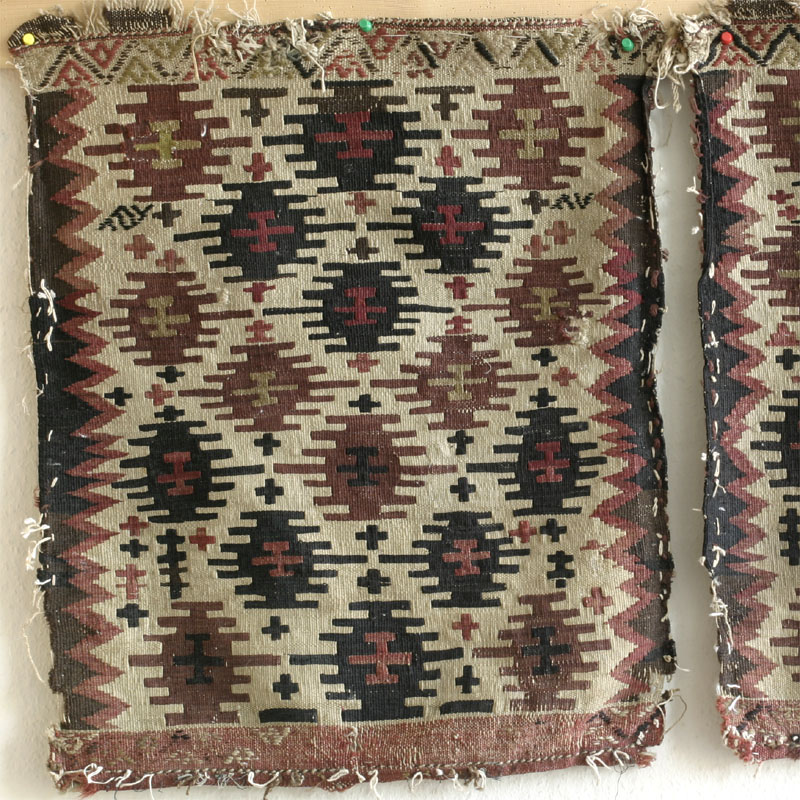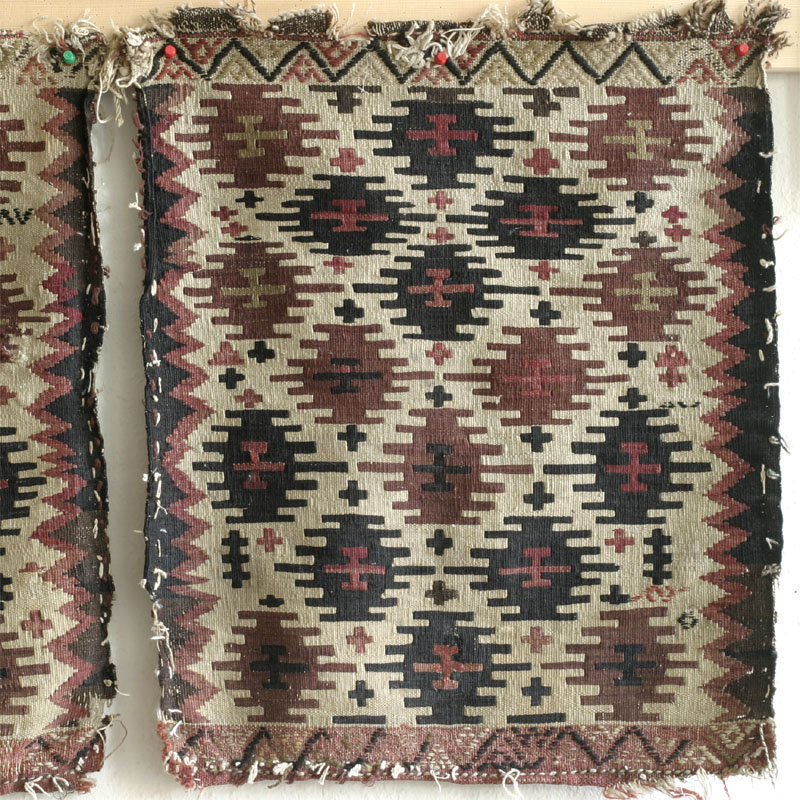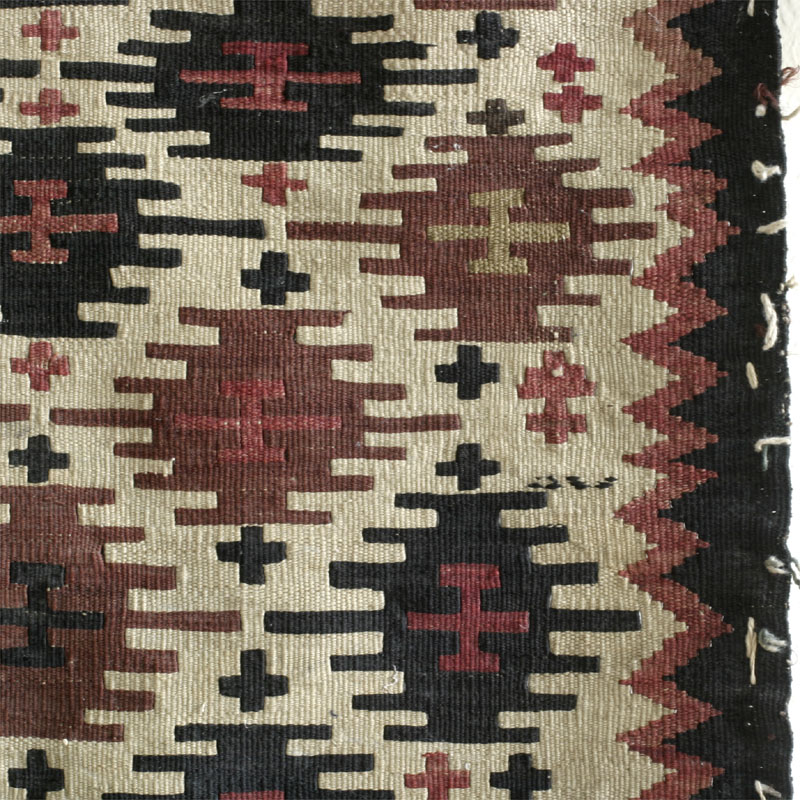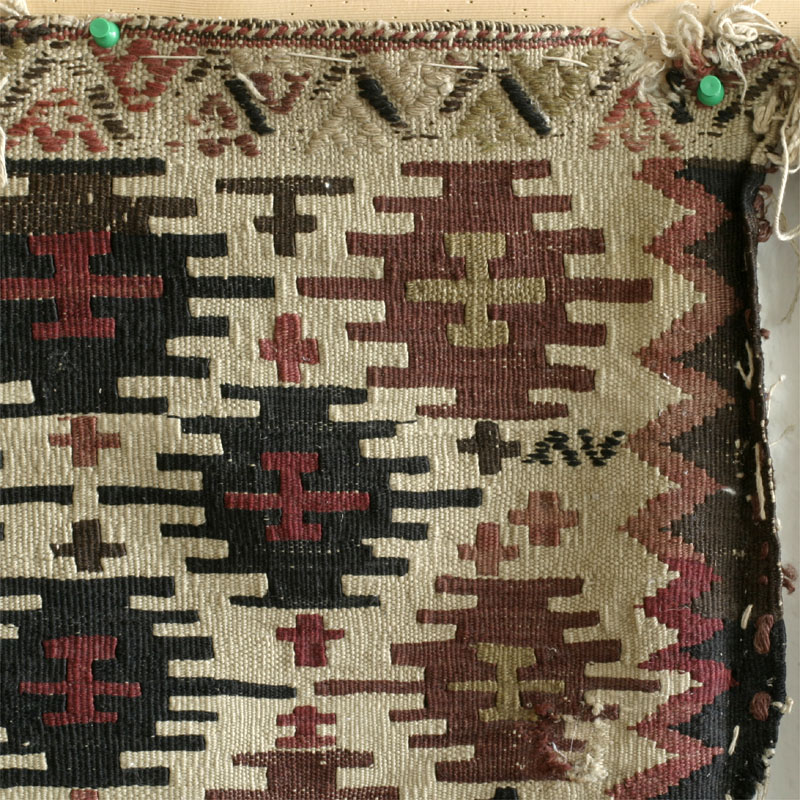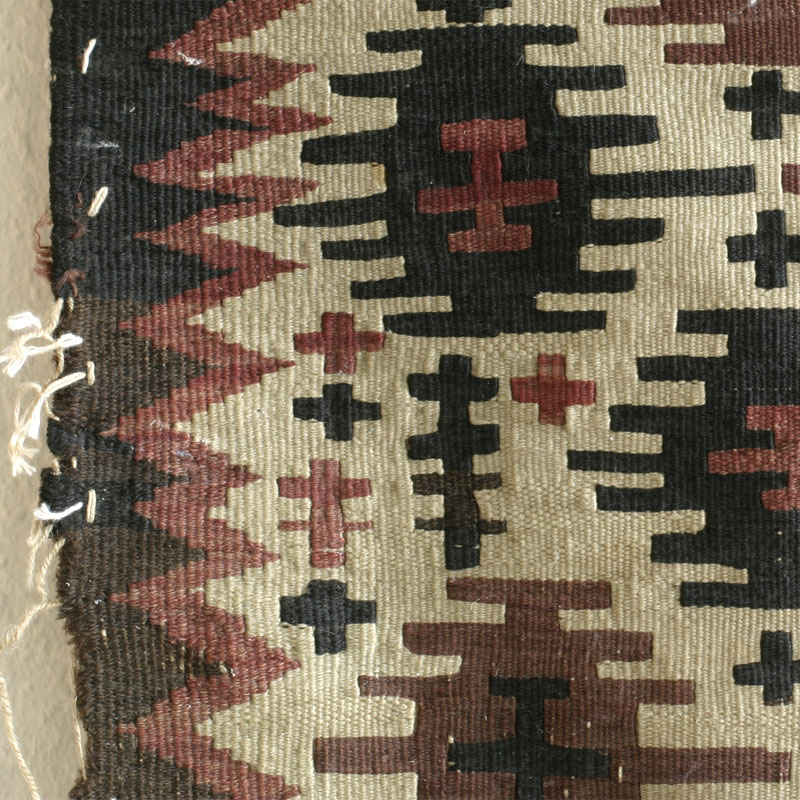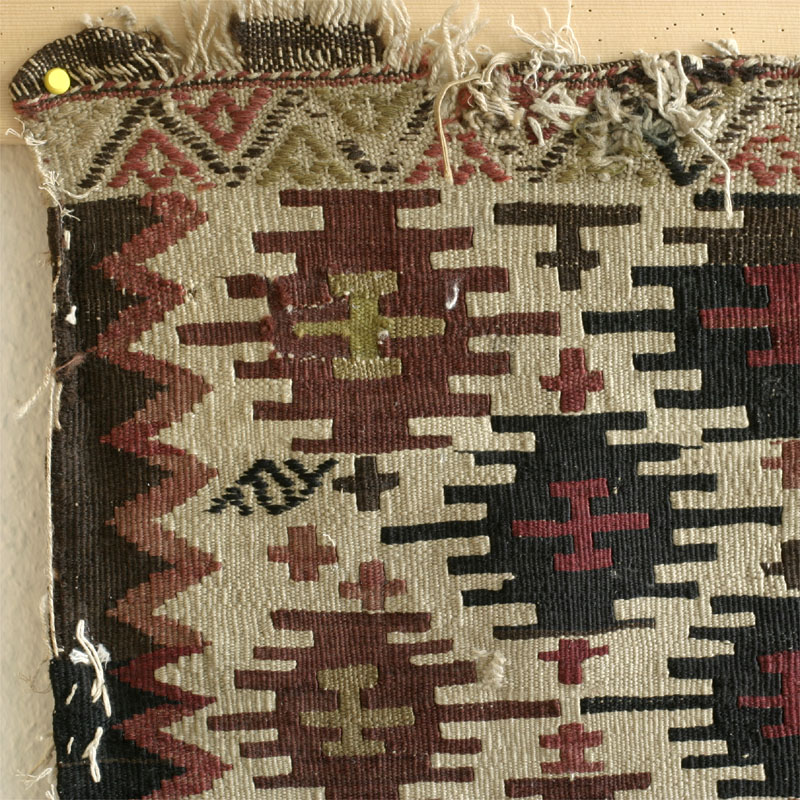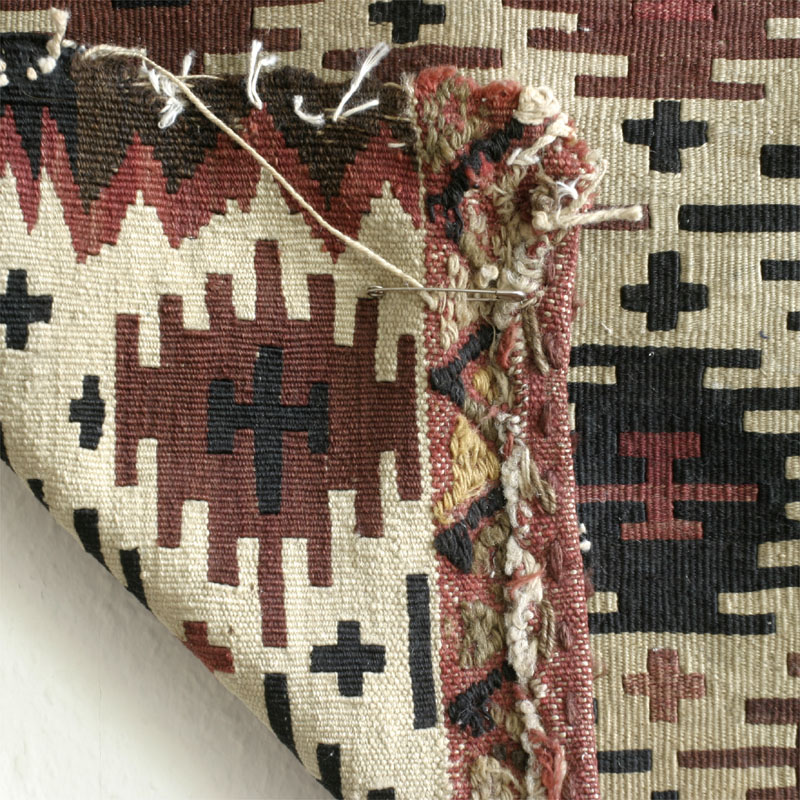Nice slit tapestry mafrash end panels featuring a diagonal arrangement of a angular forked motive which can be found often in Caucasian flatweaves. Here it has seven horizontal bars extending on each side and interlocking comb-like with the off-white ground. Small crosses are placed on top and below of the points where the central and longest bar of each motive meets the central bar of the horizontally adjacent motive. I spite of the regular structure, there is a lot of pleasing variation in terms of the shape of the motive, length of the bars, and distribution of secondary motives (crosses, double crosses, and small motives executed in extra weft wrapping) especially near the edges where an irregular diagonal zig-zag, a band in red and then various shades of brown and black up to the sides, frame the field.
The piece was probably made by tribal Shahsevan (Shahsavan) or other nomads in south west Caucasus, Moghan area, in the late 19th or early 20th century.
Slit tapestry weave with bands of reciprocal brocading top and bottom. A firm, sturdy and flexible weave with a leathery handle. White wool warps from three strands of z-spun s-plied wool (3 strands are typical for Caucasian warps), 13 warps per inch. Density of tapestry wefts ca. 22 wefts per inch.
Nice harmonious all natural palette of off white, various abrashed browns and blacks, two shades of a muted and abrashed madder red playing into mahogany brown, and a muted yellow or mustard tone used in the centres of some of the motives.
The pieces seems to have been used in its original context as end sidee of a mafrash, a large storage and transport bag for bedding and household items. The general condition is quite good, apart from various small damages, especially near the corners, and partly worn away state of the reciprocal brocading of the ends (see images). Some unobtrusive repairs through darning. The colours on the outside are a little bit mellower than on the inside (the effect of years of light). The piece is not outright dirty but the colours especially the white, will look crisper after a gentle wash.
